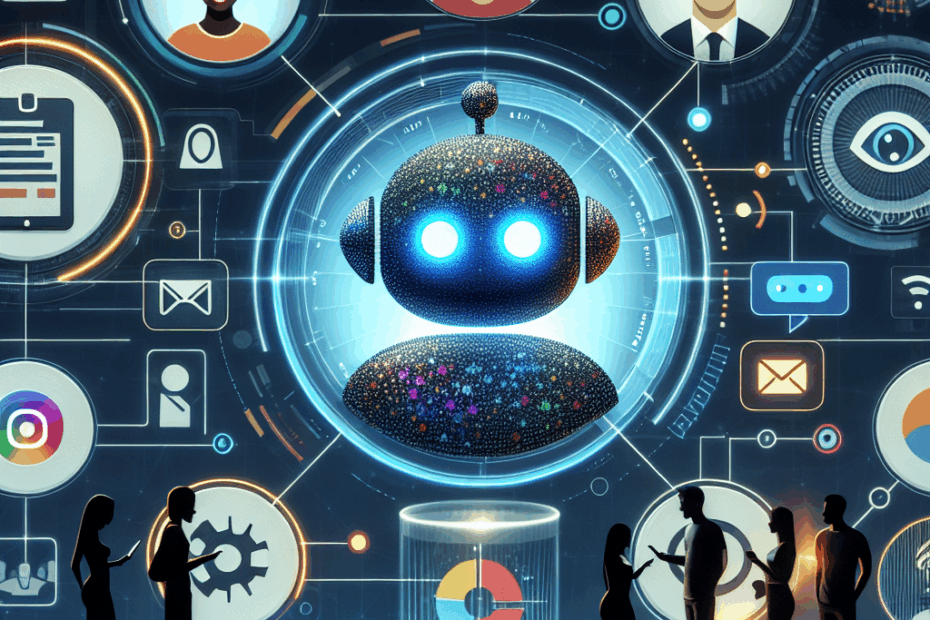Meta’s New AI App: Adding a Dash of Social to Your Chatbot
Hey everyone, John here, back with another scoop on the ever-evolving world of AI! Today, we’re diving into what Meta (you know, the company that owns Facebook, Instagram, and WhatsApp) is up to with its new AI app. They’re trying to get in on the AI craze that’s been sweeping the globe. Basically, they’re launching their own chatbot to compete with the likes of ChatGPT and Grok.
Lila, my trusty assistant, is here as always. Ready to learn, Lila?
Lila: Absolutely, John! So, what’s the big deal about this new app?
Well, Lila, the headline is that Meta wants to add a social element to the whole AI experience. Let’s break it down.
What’s the App All About?
Meta is building its AI app using something called the Llama 4 LLM.
Lila: What’s an LLM, John?
Great question, Lila! An LLM, or Large Language Model, is basically the brains behind the chatbot. Think of it as the engine that allows the AI to understand your questions, generate responses, and have conversations. It’s like a super-smart computer program that’s been trained on a massive amount of text data, so it knows a lot about a lot of things. The more data it’s trained on, the smarter it gets. Llama 4 is Meta’s version.
The app promises to be personalized, meaning it will supposedly adapt to your individual preferences and needs. Also, it aims for smoother voice chats, which would be nice if you prefer talking to your AI assistant rather than typing.
The “Social” Twist
Now, here’s where things get interesting, and where the social aspect comes in. The most noticeable feature of Meta’s app is something called a “Discover feed.”
Lila: A Discover feed? Like on Instagram?
Exactly, Lila! It’s supposed to show you how other people are interacting with the AI. You’ll be able to see what prompts (the questions or requests people give the AI) they’re using, and what kind of responses they’re getting. It’s a way to get ideas and see the AI in action. Meta is hoping this will make the app more engaging and help people discover new ways to use it. Think of it like seeing what your friends are doing with the AI, and maybe getting some inspiration.
Is it a Game Changer?
The article suggests that this social feature might not be a total game-changer. It might come off as a bit of a gimmick. The core of a good chatbot is still its ability to understand and respond to your requests accurately and in a helpful way. Adding social elements is a nice touch, but it won’t matter if the AI isn’t already solid.
Lila: So, it’s like… a fancy add-on?
Precisely, Lila. Think of it like adding sprinkles to ice cream. Sprinkles are fun, but the quality of the ice cream (the AI) is what really matters.
Why Meta is Doing This
So why is Meta jumping into the AI chatbot game? Well, they’re trying to capitalize on the huge interest in AI. ChatGPT and Grok have been getting a lot of attention (and users), and Meta doesn’t want to be left behind. It’s a race to see who can build the most useful, engaging, and popular AI assistant. Think of it as a competition among tech giants.
They also want to keep their users within their ecosystem. They already have billions of users on their platforms like Facebook and Instagram. They’re hoping that by offering an AI app, people will spend more time using Meta’s products, which means more opportunities for them to show ads and make money.
What Are the Potential Benefits?
Let’s look at some potential benefits of this new app:
- Learning and Inspiration: The Discover feed could give you new ideas on how to use the AI, similar to scrolling through Pinterest for inspiration.
- Community: The social aspect might create a sense of community among users.
- Personalization: A good AI assistant can be incredibly helpful in everyday life, from answering questions to helping with tasks.
- Voice Chat Improvement: If the voice chat feature is truly improved, it could be a more natural and convenient way to interact with the AI.
What Are the Potential Drawbacks?
Of course, there are potential downsides too:
- Privacy Concerns: If the app shares user interactions, some people might worry about their privacy.
- Accuracy: The AI’s responses need to be accurate and reliable. If it gives bad information, people won’t use it.
- Gimmick Factor: The social features might not be as useful as they seem, which could make the app less attractive.
In Conclusion
So, Meta is betting that adding a social twist to its AI chatbot will make it stand out. It’s a bold move, and it remains to be seen whether it will pay off. The success of the app will ultimately depend on the quality of the AI itself, and whether the social features provide genuine value to users.
Lila, any final thoughts?
Lila: Well, it all sounds very interesting, John! I’m curious to see how it works. I mean, the idea of seeing how other people are using AI sounds cool. It could be like a big learning party!
Exactly, Lila! And that’s the whole point of AI. It is a learning party, as its uses and capabilities keep expanding.
For me, I think it’s an interesting move by Meta. Social media and AI coming together isn’t a huge surprise, given how connected we are. I’m curious about how it impacts user privacy and data sharing, but I’m also excited to see how AI evolves in the coming years.
This article is based on the following original source, summarized from the author’s perspective:
Meta bets you want a sprinkle of social in your
chatbot
